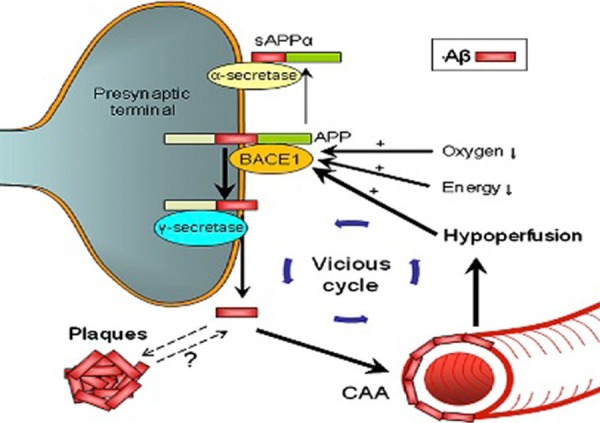Figure 3.

Interaction between vascular disease and AD pathology. Arrows indicate how cerebrovascular factors influence amyloid processing. Hypoxia resulting from vascular disease (e.g atherosclerosis) causes increased expression of hypoxia-inducible factor (HIF)-1α. HIF-1α binds to the hypoxia-responsive element on amyloid cleaving enzyme BACE1. The resulting upregulation of BACE1 mRNA expression increases the production of Aβ fragments. Hypoperfusion resulting from vascular disease and old age further increases BACE1 activity. In addition, hypoperfusion may contribute to oxygen deficiency and cause a neuroglial energy crisis, further ameliorating amyloid plaque production, CAA and ischaemia. CAA = Cerebral amyloid angiopathy, BACE1 = beta secretase 1, sAPP = secreted form of beta-APP, APP = amyloid precursor protein, Aβ = beta amyloid peptide. Image adapted with permission from Kalaria et al. [59].
